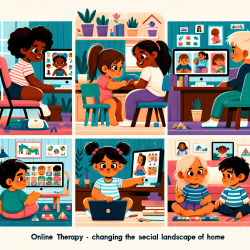As a speech-language pathologist dedicated to improving outcomes for children, I am always on the lookout for data-driven insights that can help practitioners enhance their skills. One recent study, "Supporting students with complex needs living in rural and regional New South Wales: is wraparound the answer?" provides valuable insights into the effectiveness of wraparound support for students with complex needs in rural and remote schools. Here, we delve into the findings and offer practical recommendations for implementing these strategies in your practice.
Understanding Wraparound Support
Wraparound support is a collaborative, team-based approach that involves multiple stakeholders, including the student, family members, natural supports, and school and community professionals. The goal is to develop and implement individualized care plans that address the unique needs and priorities of the student and their family. This approach has its roots in the United States but has been adapted for use in various settings, including education.
Key Findings from the Study
The study employed a qualitative research approach, using semi-structured interviews with key stakeholders to explore the current successes, barriers, and needs in implementing wraparound support in rural and remote schools in New South Wales. Here are some of the critical findings:
- Effectiveness of Bespoke Approaches: The study found that bespoke approaches to wraparound, such as restorative practices, were particularly effective in rural and remote schools.
- Resource Barriers: A lack of resources was a significant barrier across all schools. This included insufficient funding for school counselors and other support staff.
- Collaborative Practices: Schools often acted as hubs for various external providers, facilitating a coordinated approach to support. However, this was often done in an ad-hoc manner due to a lack of formalized wraparound teams.
- Positive Relationships: Building positive relationships with students and their families was crucial for effective support. Schools that involved families in developing individual plans saw better outcomes.
Recommendations for Practitioners
Based on these findings, here are some practical recommendations for practitioners looking to implement or improve wraparound support in their settings:
- Formalize Coordination: Establish a dedicated team or coordinator to manage wraparound services. This can help streamline processes and ensure that all stakeholders are on the same page.
- Expand Onsite Facilities: Provide space for external providers to see students at school. This can include after-school academic support, wellbeing spaces, and health services.
- Professional Development: Invest in training for all school staff in trauma-informed practice, restorative practice, and disability support. This ensures a consistent approach across the board.
- Use Technology: Utilize video-conferencing systems for planning and coordination meetings. This can be particularly useful in rural and remote settings where travel is a barrier.
Encouraging Further Research
While the study provides valuable insights, more research is needed to explore the effectiveness of wraparound support in different settings. Practitioners are encouraged to contribute to this growing body of knowledge by conducting their own research and sharing their findings.
To read the original research paper, please follow this link: Supporting students with complex needs living in rural and regional New South Wales: is wraparound the answer?










